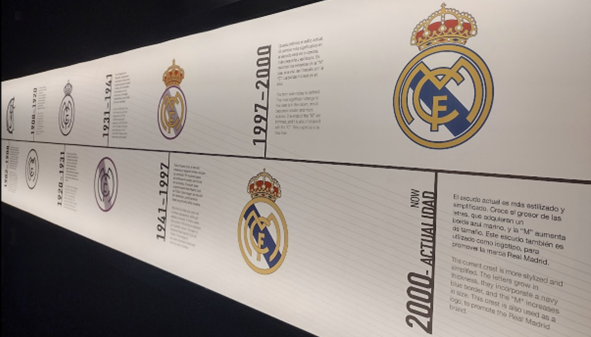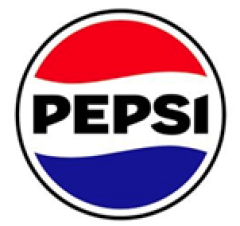- Home
- Resources
- Newsletters
- Great brands are...
Great brands are always evolving – is their protection keeping up?
Posted on June 04, 2024
When was the last time you reviewed your trade mark portfolio?
Every day, we cross paths with countless branded items bearing trade marks going back decades. Within an hour of waking up, you are likely to have encountered your favourite brand of tea or coffee, a cereal brand, cosmetics brands, clothing brands and electronic brands, many of which will have been part of the furniture of your life for years. Since you first encountered them, the brands themselves may well have evolved, with the odd font change here, logo modification there, all the time continuing to be familiar and reassuring. Similarly, the range of products and services on offer may have fluctuated and evolved over time, with new lines appearing and old ones disappearing – a cereal manufacturer may now make snack bars, a clothing brand may launch its own range of perfumes – but the overall brand messaging is likely to have stayed largely the same.
Famous football clubs such as Arsenal and Real Madrid proudly advertise their heritage, and the evolution of their famous logos. In the case of Arsenal, the famous cannon has appeared, disappeared and reappeared over the years.

Real Madrid’s logo has gained, lost and regained a crown, but there is a recognisable thread running through the different iterations of their crest.

Similarly, household brands proudly celebrate the evolution of their logos and packaging. Recognising consumers’ apparent love of nostalgia, Cadbury’s are this year marking their 200th anniversary by selling limited edition bars of their Dairy Milk chocolate in seven different styles of their classic packaging, with designs ranging from 1915 up to the present day. Whilst I’m not old enough to remember them all, some of the more recent designs are strangely evocative! In a similar vein, Pepsi have recently redesigned their logo harking back to their branding from the ‘70s, generating some helpful column inches in the marketing media.

What does this constant evolution mean for trade mark protection?
When a logo is redesigned, ideally the brand owner would seek to register the new version, particularly if it differs significantly from what has gone before. Trade mark registrations become vulnerable to challenge on the grounds of non-use after a few years. In the UK, this happens once a registration is five years old, but every country sets its own rules – Chinese Registrations can be challenged after just three years. Depending on the degree of difference, evidence of use of a redesigned logo may not be deemed adequate to support the registration of a previous version of the logo. So the Registration of an old version may be at risk, if challenged. As a result, filing new Applications to protect the logo as it is currently being used can reduce cost and uncertainty if the brand owner ever seeks to enforce their trade mark rights.
Whilst it is fairly easy to keep track of the versions of logos which have been protected, it can be harder to ensure that the coverage of goods and services continues to be fit for purpose. Trade mark applications include a list of the goods and services that a mark is used for, and in the UK, the applicant makes a declaration that they have a bona fide intention to use the mark for all the goods and services listed. Ideally, and earlier rights permitting, a well-drafted specification of goods and services will include some fairly general terms which hopefully allow a certain amount of future-proofing, but it is not possible or desirable to cover an overly broad range of items from the outset. As a business develops, their activities can move in unexpected directions, and it may not always be immediately apparent that the evolution of the range of products and services offered under a trade mark has gone beyond the scope of existing protection.
A third aspect to keep under review is the territorial scope of trade mark protection. When moving into a new geographical market, it is likely that some thought will have been given to the freedom to use the relevant mark in that territory, but IP law can be overlooked in the excitement of a business expansion, so ensuring that registrations have been secured in all key territories of interest is important.
Keeping a trade mark portfolio up-to-date and relevant is not complicated, it simply requires a regular review of precisely what marks are protected for exactly what goods/services in which territories. Where there are obvious gaps, those should be filled as soon as budgets allow.
For a large portfolio, to ensure best use of budgets, it can be useful to categorise marks into groups based on their importance to the business, to ensure that the most important marks are protected in the all countries of interest and/or in respect of a wide range of goods/services. A decision could then be taken to protect “secondary” brands only for the core goods/services of interest, and/or only in key jurisdictions.
As many brand owners will know, careful planning of new filing programmes can lead to cost savings and enable necessary expense to be staggered. For example, once a first Application has been filed for a new mark for new goods/services, any Applications for the same mark and goods/services filed elsewhere in the world for the next six months can claim “priority” from the first Application, in effect benefitting from the filing date of that first Application. Where appropriate, use of the Madrid Protocol International Trade Mark system can lead to cost savings over regular national Applications, and extra territories can sometime be added on to existing International Registrations. An EU Trade Mark Application covers all 27 EU member states in one go, making it an extremely cost-effective option, even where only two or three EU countries are of interest.
A regular review doesn’t always lead to more expense. It may also identify Registrations, or parts of Registrations, that can be allowed to lapse, because the territory and/or mark covered is no longer of commercial interest, or because the direction of the business means that whole classes of goods/services are no longer relevant. Saving on a few renewal fees may make it easier to cover the costs of filling the gaps elsewhere.
You don’t have to be the owner of a historic brand or a huge trade mark portfolio to benefit from a regular trade mark portfolio review. Almost all businesses have a brand name, and many have a logo, and they are likely to have built up a reputation in those brands that they will want to protect. Like reviewing insurance cover, it makes sense for every business to spend a little time every few years to make sure that the right protection is in place in the right territories for the right marks, in respect of the right goods and services. They will then be in a far stronger position if they find themselves caught up on either side of a trade mark dispute.
As your brand and business evolve, it is worth making sure that your trade mark protection is keeping up.
To get you started, download our online checklist which will assist with reviewing the key components of any trade mark portfolio.
Get in touch if you wish to discuss any of your findings or delve deeper into your strategy for trade mark protection.
